Lemonade stands
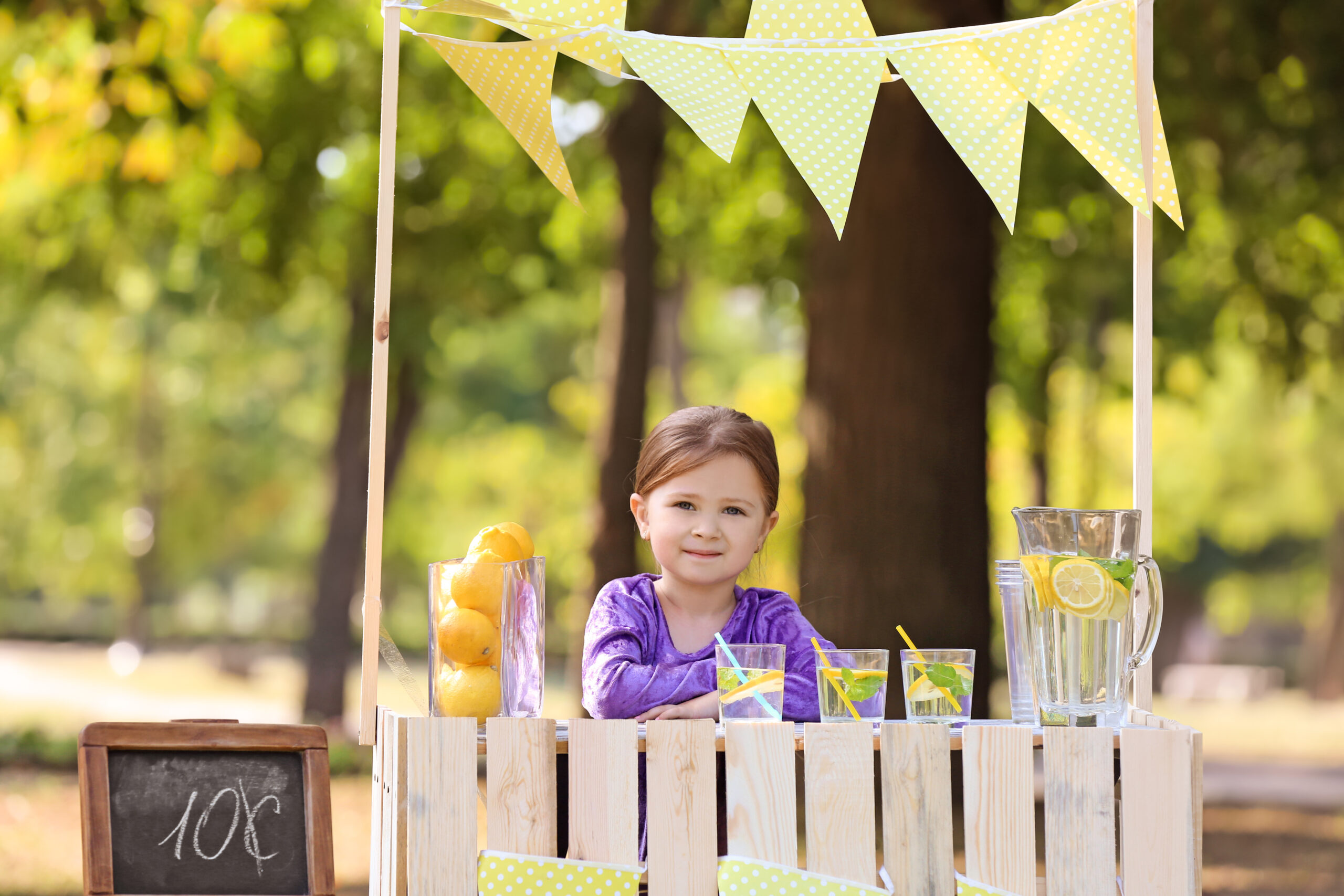
Make lemonade—and money—from lemons this summer
Simple, cool, refreshing — nothing says summer quite like a delicious cup of lemonade. So why not turn your love of lemonade into a business? Setting up your own stand is a great way to make some extra money this summer and it’s super easy to do. Following our tips below, you’ll be well on your way to a fun and profitable summer.
Pick Your Spot
One of the first things you’ll want to do is choose a location for your stand. Some kids like to set up shop in front of their homes. That’s a great idea, if your parents are busy and you don’t want to carry your stuff too far. Older, more ambitious kids, though, might look for a place with more foot traffic — near parks, festivals, farmers’ markets or businesses, for example. Just make sure that wherever you go, you have permission to sell lemonade there.
Take a Stand
So, now you have your location. Before you can start selling lemonade and making money, though, you’ll need an actual stand. Pick out a table and chairs that are sturdy and large enough, but which can also fold up, making them easier to move. And remember to bring a nice tablecloth to cover your table. It’ll make your stand look nicer and more professional — attracting more customers — and help keep your table clean from spills.
Bring the Supplies
Besides your stand, you’ll have to pick up some necessities. Obviously, you’ll need a pitcher for your lemonade, preferably one with a cover to keep the bugs out. Bring plenty of cups as well so that your customers have something to drink with. You might also want to provide other extras: napkins, straws, and maybe even ice. Just remember, though, not to make too much garbage. The cups and any other supplies you provide should be easy to recycle.
Spread the Word
Next, you’ll have to let people know that you’re open for business. Make a few eye-catching posters and signs to tell your customers where and when you’re open. You’ll also need a sign to put on your stand to display your prices. If you’re good with computers, there are some useful programs and apps you can use to create awesome posters or signs. You might even want to use social media, like Facebook or Instagram, to get the word out before and during your open hours.
Set a Price
Another thing to think about is how much you’re going to charge. This may take some planning. If you’ve spent money on supplies—such as lemonade powder or cups—you will want to sell enough lemonade to make that money back and turn a profit, as well. When deciding how much to charge for your delicious lemonade, you don’t want to charge too much or too little. It might also be a good idea to charge an easy-to-remember price, such as $1 per cup. This will make it easier to calculate prices if customers buy more than one cup at a time, and it will make it easier to count back change.
Turning Lemons into Lemonade
Last, but not least, you’ll need to make lemonade. There are almost as many different recipes out there as there are lemons. Here are two you can try out on your own:
Simple Homemade Lemonade
- 6 cups water
- 2 ½ cups sugar
- 2 cups freshly squeezed lemon juice
- Lemon slices
- Ice (optional)
Add the sugar to the water and stir until it’s dissolved. Add the freshly squeezed lemon juice. Refrigerate until chilled, then add the lemon slices and ice. Serve.
Orange Lemonade
- 2 ½ cups warm water
- 6 cups cold water
- 1 ½ cups orange juice
- 12 fresh lemons
- 1 ½ cups sugar
- 2 tbsp. lemon zest
Squeeze and remove the juice from the lemons. Make the lemon zest by grating the lemon peels. Set aside. Add the sugar to the warm water and stir until dissolved. Add the cold water, orange juice, lemon juice, and lemon zest. Refrigerate to chill. Serve.
[post_title] => Lemonade stands [post_excerpt] => [post_status] => publish [comment_status] => open [ping_status] => closed [post_password] => [post_name] => kids-getting-into-the-lemonade-business [to_ping] => [pinged] => [post_modified] => 2023-03-19 20:45:32 [post_modified_gmt] => 2023-03-20 02:45:32 [post_content_filtered] => [post_parent] => 0 [guid] => http://www.summercity.ca/?p=13321 [menu_order] => 0 [post_type] => post [post_mime_type] => [comment_count] => 0 [filter] => raw ) [_excerpt] => Make lemonade—and money—from lemons this summer Simple, cool, refreshing — nothing says summer quite like a delicious cup of lemonade. So why not turn your love of lemonade into a … ) 1The Great BBQ Fuel Forum
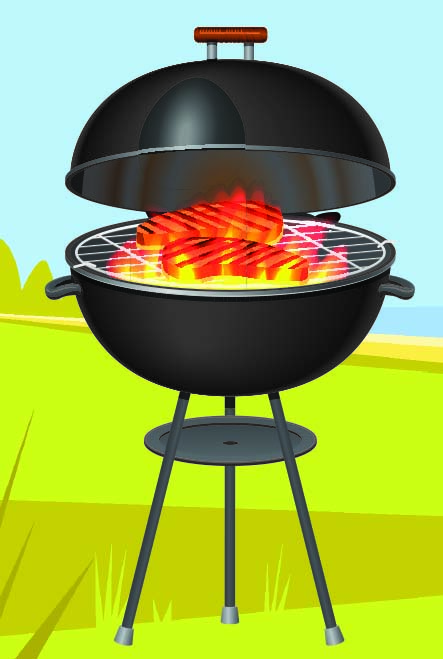
Summer’s back, meaning it’s time to revisit a heated debate
With barbecue season upon us, it’s a good time to bone up on your barbecue game. That might be difficult, given the dizzying array of barbecue choices on the market. We take a quick look at the various options out there in terms of their heat source: gas, charcoal, or electric.
Gas
Gas barbecues, like the name says, use a gas
to provide the heat to cook meat. The gas may vary, but commonly it is propane,
butane, or natural gas. Of the various barbecue methods, gas might be the happy
medium—you get the flavour of an open flame without the learning curve of
cooking with charcoal or hardwood. But, as they do use an open flame, which can
flare up, gas grills need to be kept a safe distance from structures—like your
house—to avoid fires. And that means space is
needed,
something your average apartment or condo dweller may not have.
Nonetheless, gas barbecues are relatively simple to use, as they make it easy
to provide a constant level of heat, making them the go-to choice with many
backyard chefs.
Charcoal
Charcoal grills have exploded in popularity in recent years. The reason? It’s all about the taste. No other heat source, arguably, captures the flavour of smoke the way that charcoal does. Another benefit of charcoal is that it can be started and used with almost no open flame, making some varieties of charcoal grills okay to use in smaller spaces (some buildings might still not allow charcoal barbecues on balconies, though). It’s also a slow cooking option and requires a lot of patience and time to learn how to cook with those black lumps. Charcoal is also dependent on atmospheric conditions to take BBQ to the max. On humid, windless days, there may not be enough oxygen for the charcoal to burn constantly.
Electric
Finally, electric grills are another option for barbecue aficionados. These will use electricity as their heat source, making them ideal in many cases for apartment balconies, and some varieties can even be safely used indoors. Although not as popular as gas, and often more expensive, electric grills are quick and convenient. For those seeking optimal flavour, however, electricity may not be the way to go. For obvious reasons, they don’t quite capture the flavour of smoke, and they may not provide the intense heat required for searing. They are easy to use however, providing instant and predictable heat at the press of a button, making them ideal for quick meals and rainy days.
[post_title] => The Great BBQ Fuel Forum [post_excerpt] => [post_status] => publish [comment_status] => open [ping_status] => closed [post_password] => [post_name] => the-great-bbq-fuel-forum [to_ping] => [pinged] => [post_modified] => 2021-06-08 22:45:09 [post_modified_gmt] => 2021-06-09 04:45:09 [post_content_filtered] => [post_parent] => 0 [guid] => http://www.summercity.ca/?p=13317 [menu_order] => 0 [post_type] => post [post_mime_type] => [comment_count] => 0 [filter] => raw ) [_excerpt] => Summer’s back, meaning it’s time to revisit a heated debate With barbecue season upon us, it’s a good time to bone up on your barbecue game. That might be difficult, … ) 1THE STURGEON BY KAYAK
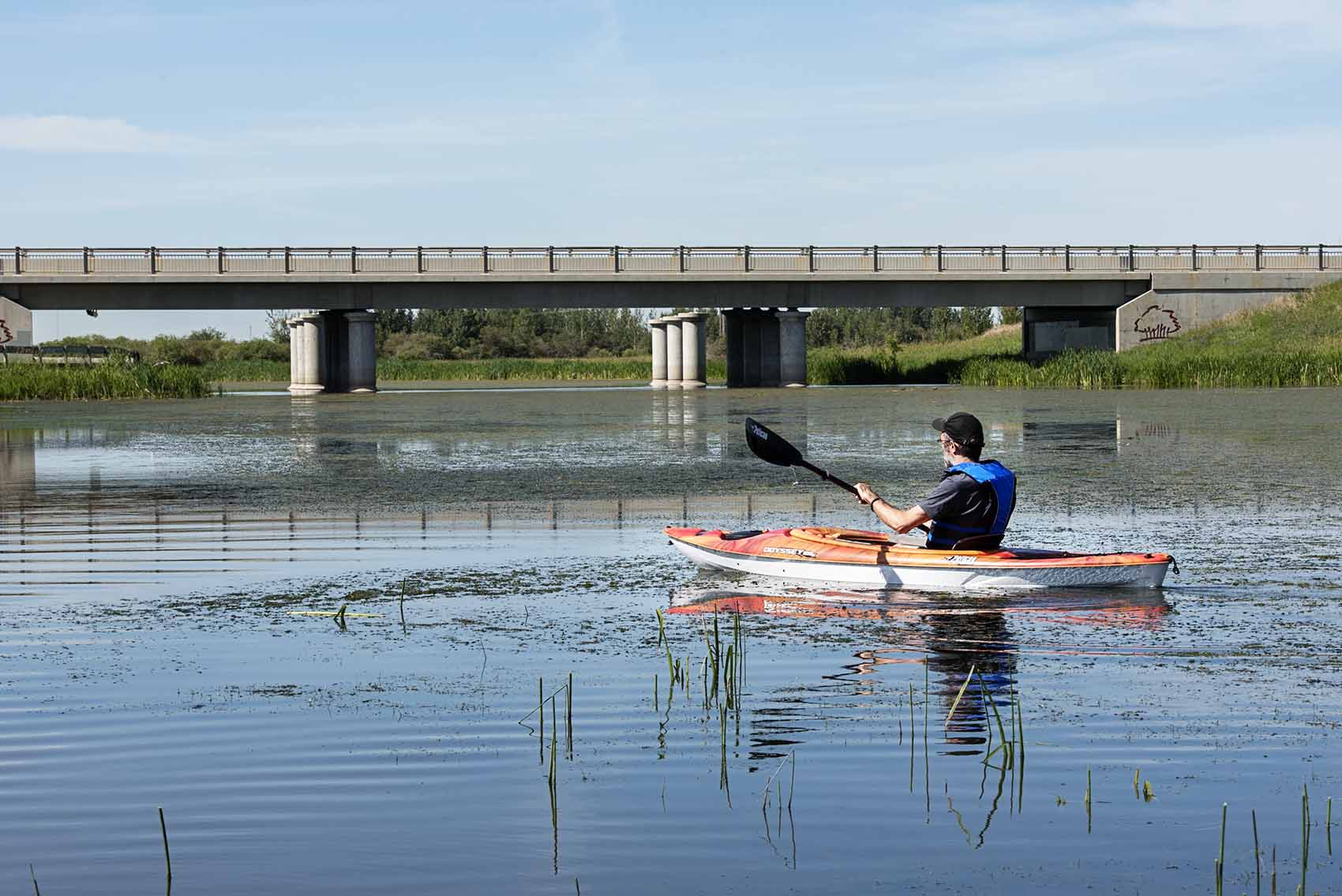
Experiencing a wilder, wetter side of St. Albert
The Sturgeon River has provided many different things throughout the central Alberta region’s history, from food and water to transportation, habitation and recreation. These days, a growing appreciation of the local waterway’s ecological importance and understated beauty is drawing many folks from the Edmonton area and surrounding communities back to the water. And there are so many ways to enjoy that water now, too, including by kayak. These ancient, low-impact watercraft are not only fun and easy to use, but also provide an entirely new perspective of our home by the river.
Close to Water
There’s no preamble, no safety lessons or even a kayaking 101 lecture. Within a few minutes of showing up at the boat launch in Riel Park, I’m on the water in a 12-foot, 50-lb. kayak, as if I’ve been doing this sort of thing for years. (I haven’t.) Not that there’s much need for formalities—unlike many other recreational activities, kayaking really is as easy as it looks. The distinctive boat sits low in the water, giving it greater stability than a typical canoe. Manoeuvrable and quick, it responds very well, even for the novice, darting forward with just a few strokes and (almost) stopping on a dime. It’s a comfortable ride, too—braces inside the seating area, including a backrest and footrests, make for easy, low-impact exploration.
The Sturgeon River is also a great venue for the first-time kayaker. According to Sean Demidovich of Active Recreational Rentals, the Sturgeon is a big draw for many of his customers, especially through the spring and early summer. A popular route for many clients is to float downstream from Riel Park to downtown or even further.
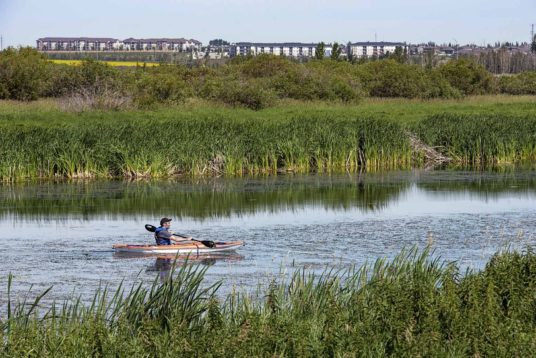
On this mid-July morning, however, weeds are already choking much of the sluggish river. Instead of heading off for a jaunt through town, for a few minutes I simply try out the area around the boat launch, getting a feel for the water. Unlike other modes of aquatic travel, kayaks really put you in touch with the thing you’re moving through—you feel you’re in the water, as much as you’re on it. I stop for a moment to watch the dark head of a muskrat bobbing past as it crosses from one bank to the other. Then I turn the kayak upstream and make my way to more open water.
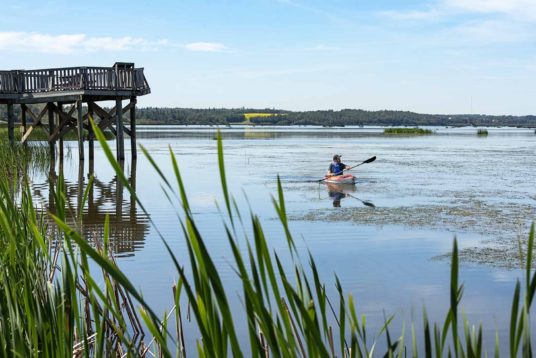
Birds of a Feather
Another advantage of kayaks, at least as far as the soloist is concerned, is the paddle. The distinctive spoon blades at either end allow for more strokes and a rhythmic pace, as the kayaker isn’t constantly switching the paddle from one side of the boat to the other. This means kayaks tend to “track” (i.e. move in a straight line) more easily than other watercraft. While canoes don’t necessarily require more skill to paddle, the fact is even a beginner like myself can feel (and look) pretty masterful in a kayak.
Though there’s no current to fight against, I take my time as one of the river’s greatest draws soon reveals itself. The riverbanks and in the shallows of Big Lake are home to a great diversity of birds. I spot three dowitchers, plump birds on stick-like legs that poke for invertebrates in the mud with their long, sensitive beaks. As I coast toward them, the wary birds swim off into the denseness of the rushes.
Meanwhile, a male red-winged blackbird flies back and forth across the river, perching on the tall rushes on either side. While the females tend to stay out of sight, the males are gregarious attention-getters, with the plumage to match: glossy black all over with bright, orange-red shoulder patches that flutter beautifully when the bird is in flight.
Black terns are another recognizable species, spotted more easily for their distinctive hunting behaviour than their grey-to-dark colouring. Like dragonflies, they hover over the water and frequently dart at the surface when they spot a soon-to-be unfortunate bug or fish. They’re also known for aggressively defending their nests by dive-bombing anyone who wanders too close, to the point that the nearby boardwalk had to be shut down at one point.
A Big Lake
In many ways, a kayak is the perfect way to explore the nooks and crannies of the Sturgeon and the lake it flows through. Those slow-moving waters offer little resistance, allowing paddlers to explore at their leisure. Compared to other watercraft, especially the motorized variety, kayaks have less of an impact on the environment. As self-powered vehicles, they don’t leak gas or oil into water and their lower speeds in shallow waters don’t cause erosion to shorelines.
On the other hand, any vehicle (and the human presence that accompanies it) causes at least some disruption to fragile ecosystems. The fact that kayaks can go places other vehicles can’t—like uncomfortably close to nesting areas—places the onus on the user to enjoy this environment responsibly. It’s one good reason why Alberta Parks has considered enacting a total boat ban for Big Lake as part of the draft management plan for the provincial park that surrounds it.
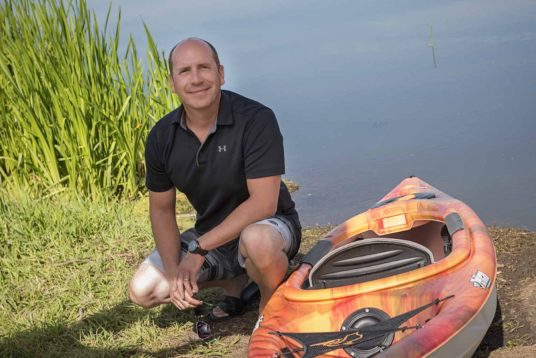
Such a ban would be disappointing to some boaters, but it would be understandable. The lake, the centrepiece of Lois Hole Centennial Provincial Park, is known for its wetlands habitat, an ecosystem valued for its ability to absorb and purify large amounts of water, process carbon and inorganic nutrients, stabilize shorelines, and provide food and homes to a wide range of plants and animals, especially birds. Wetlands are considered the most biologically diverse of ecosystems, and at Big Lake it’s easy to see why. Up to 237 bird species have been recorded there, with around 180 reportedly using the site annually. Due to this diversity of life, and the importance of the provincial park in conserving the wetlands, Big Lake is recognized globally as an Important Bird and Biodiversity Area (IBA), a listing developed by BirdLife International to recognize important bird habitats around the world.
Back Again
After two hours of paddling, with the water refracting the midday sun and a blanket of heat hazing the surroundings, it’s time to head back to Riel. Like other journeys, things look different on the return. On the horizon, new subdivisions are going up as a fast-growing city, by necessity, swallows up the open spaces around it. One wonders how we’ll experience this and other natural places in the future, and if we’ll be able to balance a newfound appreciation with the competing demands of development, recreation, and conservation.
THIS STORY WAS PREPARED WITH THE PARTICIPATION OF A BUSINESS THAT IS NO LONGER OPERATIONAL. IT WAS CALLED ACTIVE RECREATIONAL RENTALS.
[post_title] => THE STURGEON BY KAYAK [post_excerpt] => [post_status] => publish [comment_status] => open [ping_status] => closed [post_password] => [post_name] => the-sturgeon-by-kayak [to_ping] => [pinged] => [post_modified] => 2021-06-08 22:43:18 [post_modified_gmt] => 2021-06-09 04:43:18 [post_content_filtered] => [post_parent] => 0 [guid] => http://www.summercity.ca/?p=13296 [menu_order] => 0 [post_type] => post [post_mime_type] => [comment_count] => 0 [filter] => raw ) [_excerpt] => Experiencing a wilder, wetter side of St. Albert The Sturgeon River has provided many different things throughout the central Alberta region’s history, from food and water to transportation, habitation and … ) 1Cooking over the fire
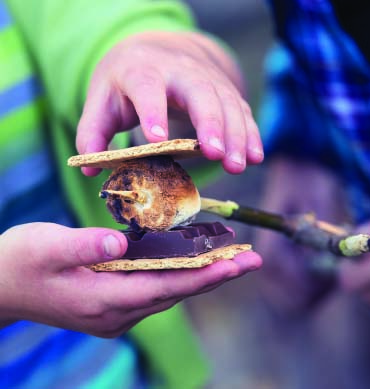
Where There are S’mores, There’s Fire A rite of summer on the Prairies, the classic campfire lights the way to a glorious evening
Anyone who’s sat around a campfire as twilight turns to night knows how easy it is to lose one’s thoughts in a flicker of flame. After all, there’s something about a blazing fire that takes us away from the world and its worries, to a place in our minds that’s primeval and mysterious. Perhaps fire fascinates us because it’s a study in opposites—one moment, it’s dangerous and the next moment, it’s a source of comfort. Whatever it is, those flames have been casting their spell for a very long time.
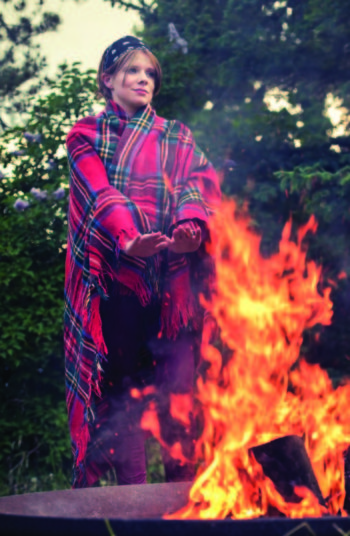
Philosophical musings aside, most can agree that few things set the mood for an evening of relaxing companionship like a hearty fire. Whether you’re at a campground, cabin, or just chilling around your backyard fire pit, a crackling fire is a perfect way to wind down your summer days. It all starts with some firewood and a sturdy axe. Make sure you leave a few thick, slow-burning logs to toss on as the fire starts to dim. Just don’t forget the marshmallows, once you’ve got a decent fire happening.
-
Building a Campfire 101
The ingredients of a campfire are simple: heat, oxygen, and fuel. The heat is easily supplied with a lighter or matches, and the oxygen is all around you, so that leaves the fuel.
You’ll need three types: tinder, kindling, and chopped firewood. The tinder should be easy to ignite—paper, leaves, even lint will do. Make a loose pile that can breathe easily, then build your kindling around it. Kindling consists of smaller pieces of wood like sticks, branches, or wood chips. These will catch fire easily, but burn longer than tinder.
Next, light the tinder in several places, and fan or blow on it to supply more oxygen. As the flames grow and the kindling catches, start feeding it with firewood—carefully, and with smaller pieces first, until the fire’s well on its way. Kick back and enjoy your night by firelight.
-
Where to Get Firewood
For the occasional fire builder, it’s easy to buy firewood in the Edmonton area, where many stores, supermarkets, and service stations sell it in bags and boxes. A bundle of wood is typically 0.75 cubic feet, roughly containing up to nine pieces and selling for less than $10. Depending on how big or how long-burning you want your fire to be, five to ten bundles should do for an evening’s fire. Like most things, buying in greater quantities is more economical, and if you’re planning on a lot of fires this summer, bigger might be better.
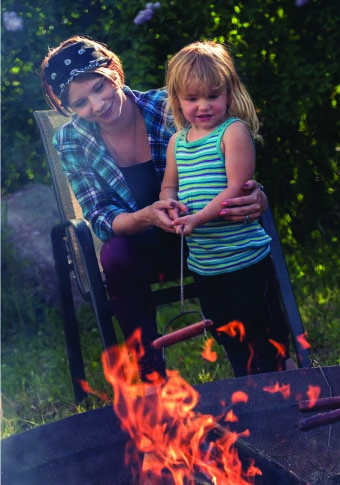
Also available at many stores are composite logs. Made from sawdust and wood waste cut into log shapes, these products are arguably a greener alternative, as they burn longer and more efficiently than firewood, and give off less carbon monoxide. A six-pack of three-hour logs typically costs between $15 and $25.
-
Upscale Your S’mores
When the fire’s good and roaring, the natural inclination is to bring out the smokies, the traditional main course of many fireside feasts. And you can’t forget a kiddie favorite like the s’more, consisting of two graham crackers, one golden oozing marshmallow and one chunk of chocolate. But adults might want to tinker with the s’mores formula to suit more mature tastes. So it doesn’t hurt to experiment with dark or flavoured chocolate, substitute oatcakes or cookies for the graham crackers, or dunk your creation in a salted-caramel sauce. You’re only limited by the number of marshmallows left in the bag. Here’s a recipe to get you started.
“Gourmet” Cherry Chocolate S’mores
- 1 artisanal marshmallow (because we’re being fancy here)
- 2 butter cookies (but not shortbread, which will crumble)
- 1 square cherry-flavoured chocolate (the really expensive kind)
- 1 tbsp cherry preserves (that’s jam)
Toast marshmallow over an open flame. Top one cookie with chocolate, artisanal toasted marshmallow, cherry preserves, and the remaining reserved cookie. Eat.
-
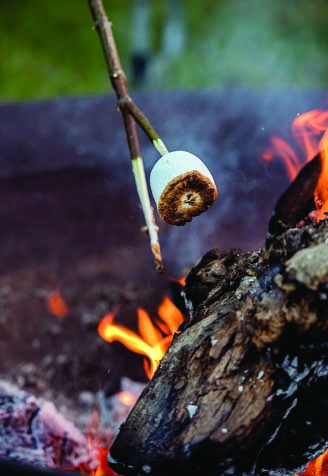
Firepit Rules and Regs
In Edmonton, the Community Standards Bylaw regulates fire pit usage. According to this bylaw, fire pits must be installed a minimum of three metres from buildings, property lines, and anything that can burn. They should be less than 0.6 metres high and a metre wide, and they should have enclosed sides and a mesh screen with openings no larger than 1.25 cm. Care should be taken to minimize the amount of smoke a fire creates, and, as elsewhere, fire bans must be respected. For fuel, only use charcoal or clean, dry wood (in other words, no pallet fires in your backyards please). For more info, check the City of Edmonton website or one that’s pertinent to your municipality or county.
[post_title] => Cooking over the fire [post_excerpt] => [post_status] => publish [comment_status] => open [ping_status] => closed [post_password] => [post_name] => classiccampfire [to_ping] => [pinged] => [post_modified] => 2023-03-20 13:05:56 [post_modified_gmt] => 2023-03-20 19:05:56 [post_content_filtered] => [post_parent] => 0 [guid] => http://www.summercity.ca/?p=13290 [menu_order] => 0 [post_type] => post [post_mime_type] => [comment_count] => 0 [filter] => raw ) [_excerpt] => Where There are S’mores, There’s Fire A rite of summer on the Prairies, the classic campfire lights the way to a glorious evening Anyone who’s sat around a campfire as … ) 1AN ANGLER’S PARADISE Fishing in Alberta
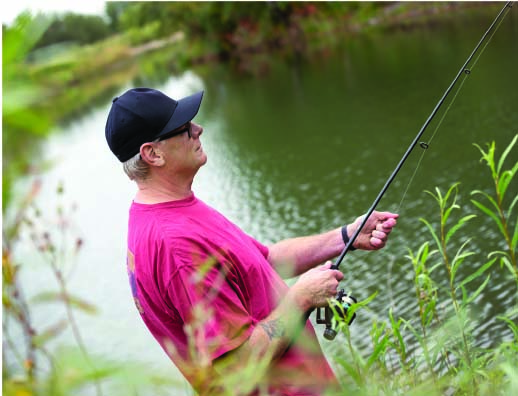
Despite being landlocked, Alberta has a lot to offer when it comes to sport fishing. There are over 600 freshwater lakes in this province and about 250 rivers, each with its own unique joys and challenges for anglers. And these days, there’s a lot more to a fishing trip than spending long days alone with your thoughts. It can also be the perfect reason to travel this beautiful province of ours, making memories with friends and family and learning new skills as you go. And, of course, few things are more satisfying than catching your own dinner. Thanks to the help of the Internet, it has never been easier to learn the ropes, find the best spots and learn how to be a responsible fisher. Here’s where we started. Take a look.
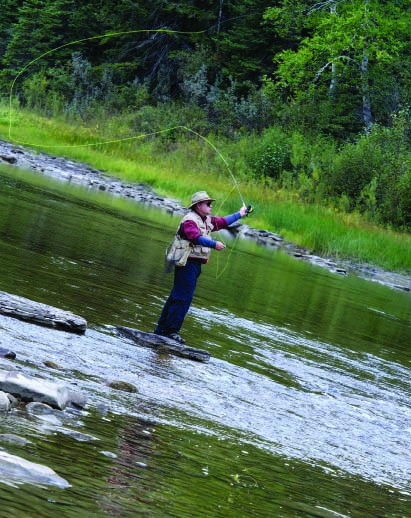
The laws and regulations surrounding sport fishing in Alberta are numerous, but the basics are simple. If you’re between the ages of 16 and 65, the first things you’ll need before getting out on the water are a Wildlife Identification Number and a fishing licence. You can purchase these online or at participating retail locations, such as Canadian Tire. Each body of water has its own season, as well as its own limits on which fish you can keep and how many, so before you head out, familiarize yourself with the specific rules that govern your destination.
Although you can go fishing just about
anywhere that fish are found, some locations make for better fishing trips than
others.
Here are a few regional favourites.
Pigeon Lake
• Friendly to campers, families and pets
• One of the best destinations for catching
• Walleye in Alberta (Special Walleye Licence required to keep catches)
Find Pigeon Lake via THIS MAP
-
Wabaman Lake
• A catch-and-release lake, perfect for those who love to fish but aren’t interested in the cooking part of the process Calm waters ideal for introducing kids to the sport
• Camping and boat rentals nearby
• Home to Pike, Yellow Perch and Whitefish
Find Wabamun Lake via THIS MAP
-
Lac la Biche
• Beautiful island campground that allows you quick and easy access to the water
• Home to Perch, Whitefish and Burbot Bow
Find Lac La Biche via THIS MAP
-
River (Calgary)
• Provides a challenge for those wishing to improve their skills
• Top fly-fishing destination in Alberta
• Home to many varieties of Trout
-
Athabasca River
• Camping friendly
• Ideal for shore-side fishing
• Home to Burbot, Goldeye and Northern Pike
-
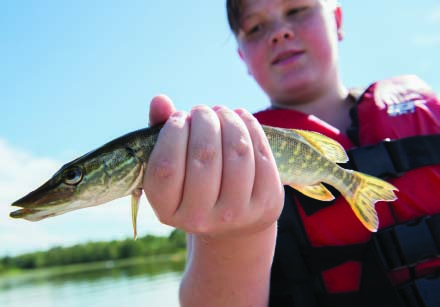
If you’re new to fishing, it may seem like there are a lot of fishing regulations that might detract from the fun of the sport. But not only are these regulations easy to follow, once you get a handle on them, you’ll appreciate that they serve an important purpose. Alberta’s 600 lakes and 250 rivers are a precious resource that needs to be guarded so that residents can enjoy the sport for generations to come. Respect for the waters, respect for the fish populations and respect for the regulations go a long way to preserving both the beauty of nature and the fun of the sport. So grab your fishing rod, grab some good friends and head out to the water. There is a whole province just waiting to be explored.
-
Online Resources You’ll Want to Consult
Albertarelm.com—Visit to register for a fishing licence online.
Albertaregulations.ca—Learn the specifics of all the fishing laws in Alberta.
Albertafishingguide.com—A location database, showing species, catch limits, seasons and sizes for each body of water in Alberta.
Mywildalberta.ca—Provides updates on advisories, bans and restrictions.
AHEIA.com—Provides lessons and certifications regarding responsible fishing and wildlife conservation.
[post_title] => AN ANGLER’S PARADISE Fishing in Alberta [post_excerpt] => [post_status] => publish [comment_status] => open [ping_status] => closed [post_password] => [post_name] => an-anglers-paradise-fishing-in-alberta [to_ping] => [pinged] => [post_modified] => 2023-03-20 10:29:36 [post_modified_gmt] => 2023-03-20 16:29:36 [post_content_filtered] => [post_parent] => 0 [guid] => http://www.summercity.ca/?p=13285 [menu_order] => 0 [post_type] => post [post_mime_type] => [comment_count] => 0 [filter] => raw ) [_excerpt] => Despite being landlocked, Alberta has a lot to offer when it comes to sport fishing. There are over 600 freshwater lakes in this province and about 250 rivers, each with … ) 1Summer Pet Advice
Five things about nachos
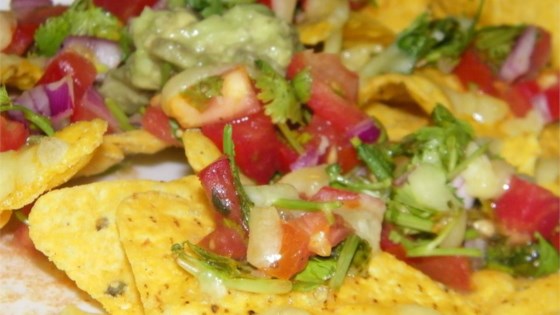
Yes, say it in “Mexican” ---In Mexico, they are known as
Along time ago, in 1943 ---The snack was invented circa 1943 by Ignacio “Nacho” Anaya at the Victory Club restaurant in Piedras Negras, Coahuila, Mexico. The original recipe consisted of fried corn tortillas covered with just melted cheddar cheese and pickled jalapeño peppers.
They're that popular ---International Day of the Nacho takes place every October 21 and was initiated by the United States and Mexico as a way to commemorate the invention and its international popularity.
Cravings ---Nachos are said to be the food most commonly craved by pregnant women.
An inventive twist ---If you want to get a little more creative than the basic toppings, other popular varieties include bacon, shrimp, chorizo, pulled pork, artichoke hearts, cilantro pesto, fried chicken, feta cheese and blue cheese.
Five things about candy and caramel apples

When they came to be ---The origin of candy or caramel apples is unclear, but references to dipping apples in melted caramel date back to the 1800s.
Bad apples ---The apples became a popular Halloween treat in the '60s, but due to the fear, real and exaggerated, of them being tampered with, children have been encouraged not to accept homemade Halloween treats.
Tart ---Tart apples, such as Granny Smith or McIntosh, are the
So Hot! ---The liquid candy coating must reach approximately 150°C (300°F), before the apples are dipped, and will harden within one hour.
Four things about hot dogs
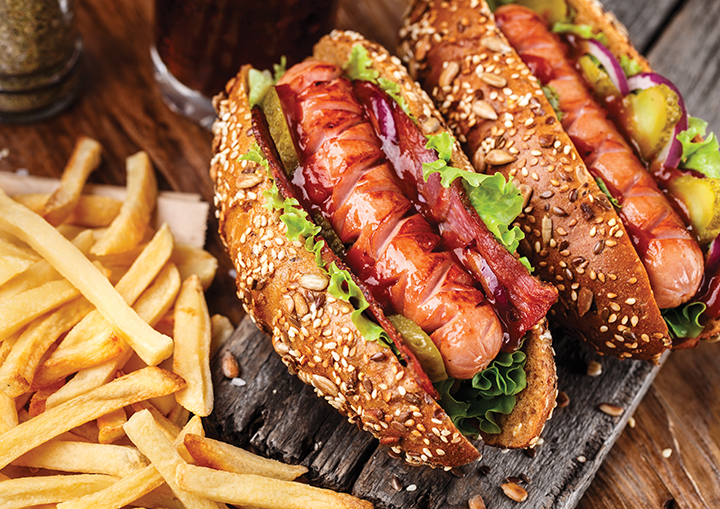
The biggest! ---The Guinness World Record for the world's largest hot dog goes to the Akasaka Prince Hotel in Tokyo, which was 60.3 m in length.
Mind your manners ---There is hot dog etiquette. Use tongs when picking hot dogs up from a serving tray. Puncturing them with a fork causes juices to get out. When dressing a dog,
Variations on a classic ---Exploring the world of hotdogs, you will find some creative ideas. Some unique ideas
First class dog ---Looking to splurge on your hotdog purchase, Serendipity 3 on Manhattan's Upper East Side goes for $69. The “haute” dog is a 12-inch-long pure beef frankfurter grilled in white truffle oil. It's then served on a salted pretzel bun from Germany and coated with white truffle butter. The condiments are extravagant and include duck fois gras, black truffles, caramelized Vidalia onions, heirloom tomato ketchup and Dijon mustard with more black truffles.
